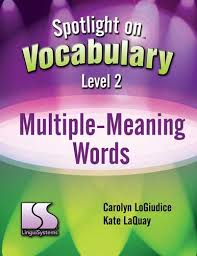The Key to English Two-word Verbs

This manual is intended to help the student, either in a class or working alone, to master a troublesome matter in English verb patterning, namely, the combination verb + adverb (or preposition), with or without a following noun object. These combinations are variously called “two-word verbs” (as in this book), “merged verbs,” “compound verbs,” “verb-adverb combinations,” and so forth. We are dealing, of course, with structures like put it on, call up Mr. Smith, take this information down, in which a verb and a function word (adverb) work closely together to express a meaning.
In addition, when an object is present, these words may be separated by noun objects and must be separated by unstressed pronoun objects. Such combinations are usually called “separable” two-word verbs. We also have combinations like get on the bus, look for the money, wait on the customers, which are inseparable – we say get on it, look for it, wait on them – but which nevertheless are more intimately connected than a mere intransitive verb followed by a prepositional phrase.
In identifying the inseparable two-word verbs, we have relied almost entirely on meaning. There is some overlapping with The Key to English Prepositions 2, since that book treats combinations of verbs and prepositional phrases. Our criterion is this: if the meaning of a combination can be predicted on the basis of the meaning of the individual parts (listen to, insist on), it is called a verb followed by a preposition; if not (look for, call on), it is called a two-word verb. Some students may need to use a bilingual dictionary along with this book, as the vocabulary has not been restricted. The Glossary at the end of the book lists about 400 combinations, with definitions. I



















